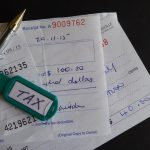ATO releases corporate tax data

The Australian Tax Office has published information about Australia’s corporate tax system, which continues to build a picture of the tax affairs of the largest companies operating in Australia.
Second Commissioner Jeremy Hirschhorn said the corporate tax transparency report for 2016-17 includes certain tax information of around 2,100 large companies operating in Australia who paid $45.7 billion, or almost two-thirds of total company income tax payable for that year.
“The transparency report reflects a bounce-back in the energy and resources sector, which led to a strong increase in tax revenue from the large corporate sector overall,” he said.
The initial impacts of the Multinational Anti-Avoidance Law (MAAL) emerge in the 2016-17 data, as companies have restructured to comply with the requirements of the law.
“In coming years the full effect of the MAAL will flow through as multinational companies book billions more in sales locally.
“The report will also reflect restructures made by companies to avoid paying the Diverted Profits Tax and increased compliance thanks to Country-by-Country reporting.
“Increasingly, the data will also reflect our approach to resolving past matters in requiring future compliance to be locked in,” Mr Hirschhorn said.
The ATO is required under law to publish tax information reported to us by certain large companies each year.
This year’s tax transparency report covers:
- 1,721 Australian public and foreign-owned companies with an income of $100 million or more
- 388 Australian-owned resident private companies with an income of $200 million or more
- 14 entities with petroleum resource rent tax (PRRT) payable
- tax payable according to the tax returns as lodged – it does not include subsequent audit activity.
Mr Hirschhorn warned against focusing on the number of entities that paid either no tax or a small amount of tax relative to gross income, when interpreting the transparency data.
It is important to remember:
- corporate income tax is payable on profits, not gross income
- many single entities that did not pay tax are members of a corporate group that did pay tax
- a significant percentage of companies make losses each year, for both tax purposes and accounting purposes
- current profits can be offset against accumulated past losses, which means
- a company with a bad economic performance in one year may not pay tax for several years afterwards
- a company in start-up phase may take several profitable years to recoup establishment costs prior to paying tax; this is particularly the case with natural resource projects.
“Many companies also provide significantly more detailed information through the Board of Taxation’s Voluntary Tax Transparency Code,” he said.
The ATO has also released tax gap analysis for the 2015-16 income year which further demonstrates the ATO is committed to holding large corporates to account.
“Today we can also confirm the estimated level of compliance of large corporate groups has increased from 94% to over 95%, the vast bulk of which is paid voluntarily,” he said.
“While the level of performance is already world-leading, we are confident our strategies in conjunction with new laws and resources will result in continued improvements over the coming years.
“The community can be confident our focus on large corporates and multinationals is working and our tax system is operating well,” he said.
The ATO can also confirm high levels of compliance with PRRT obligations, with the gap estimate for the 2015-16 income year showing 98% of PRRT is paid voluntarily.
- PRRT payable by entities within the tax transparency report rose by close to $100 million to $946 million in 2016-17 primarily due to higher oil prices. There were 14 entities in this population compared to nine in 2015-16.
- We expect PRRT payable will exceed $1 billion in 2017-18. On average in 2017-18, crude oil prices were up 25% and the Australian dollar was up 2.6% against the U.S. dollar.
The highly concentrated PRRT taxpayer base means the ATO closely monitors projects that are, or are close to being, profitable for PRRT purposes to ensure the correct amount of PRRT is paid.
“While economic conditions may change from year to year, the data shows the ATO has strong and continuous scrutiny on Australia’s largest taxpayers, as the community would expect,” Mr Hirschhorn explained.
“There will be no lessening of the ATO’s commitment to ensuring large corporate taxpayers are paying the correct amount of tax.
“We continue to monitor the market and release advice and guidance on issues in real-time as they arise, as well as maintaining real-time engagement with all large taxpayers.
“This has been made possible through funding for the Tax Avoidance Taskforce and new laws, such as the MAAL and the DPT, which ensure we have the human and legislative resources to hold these companies to account.”








